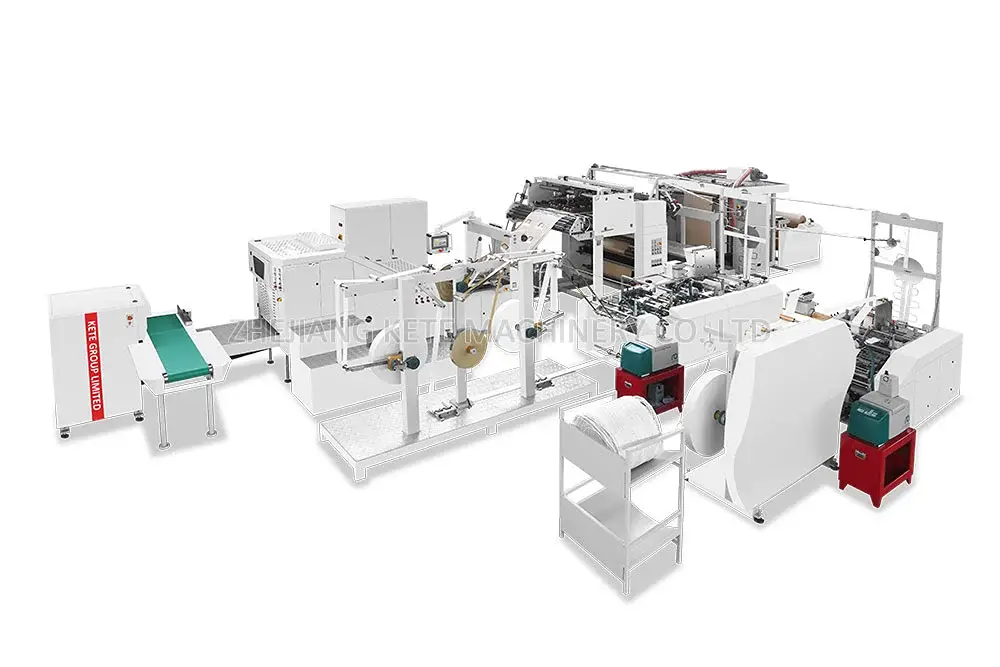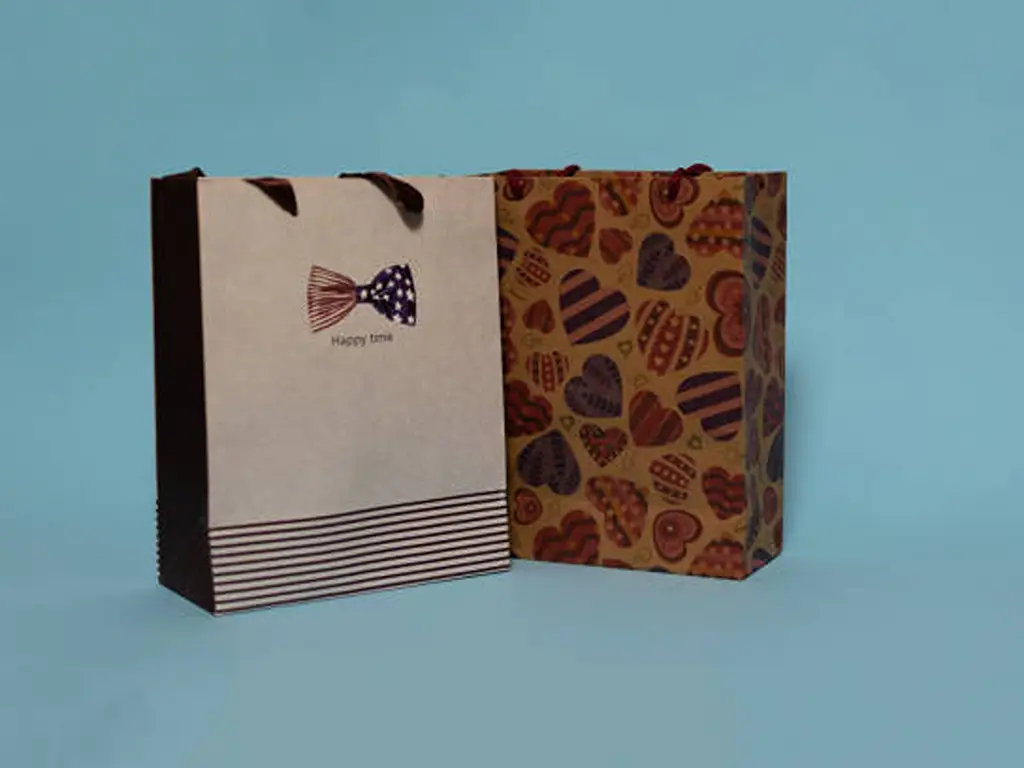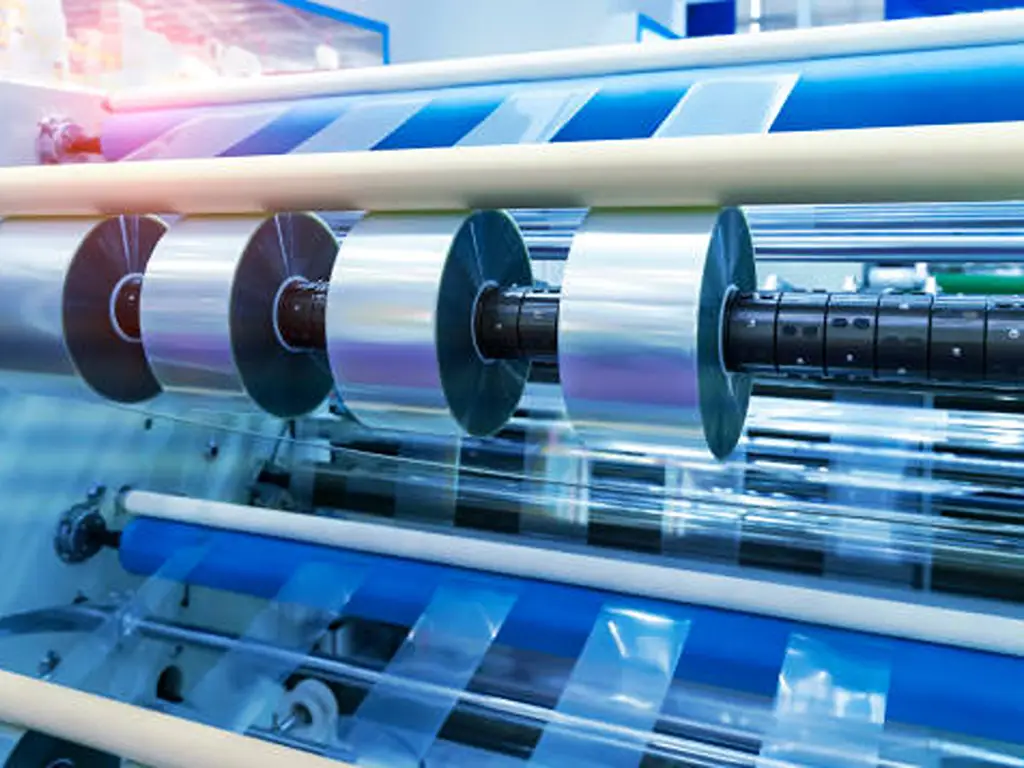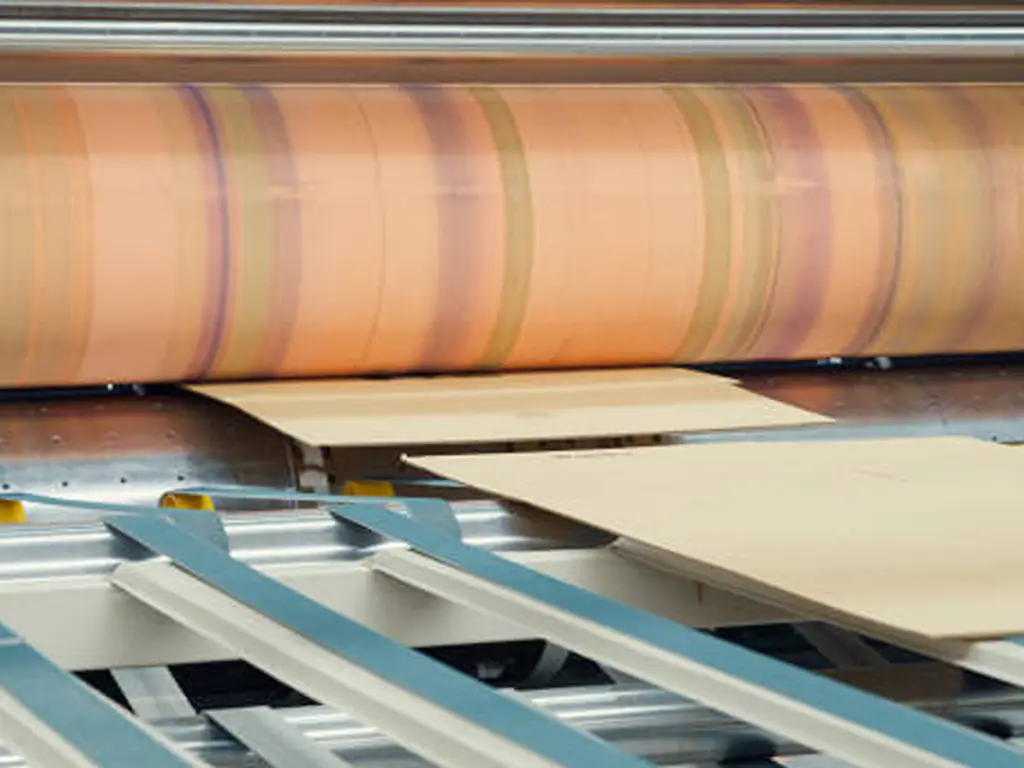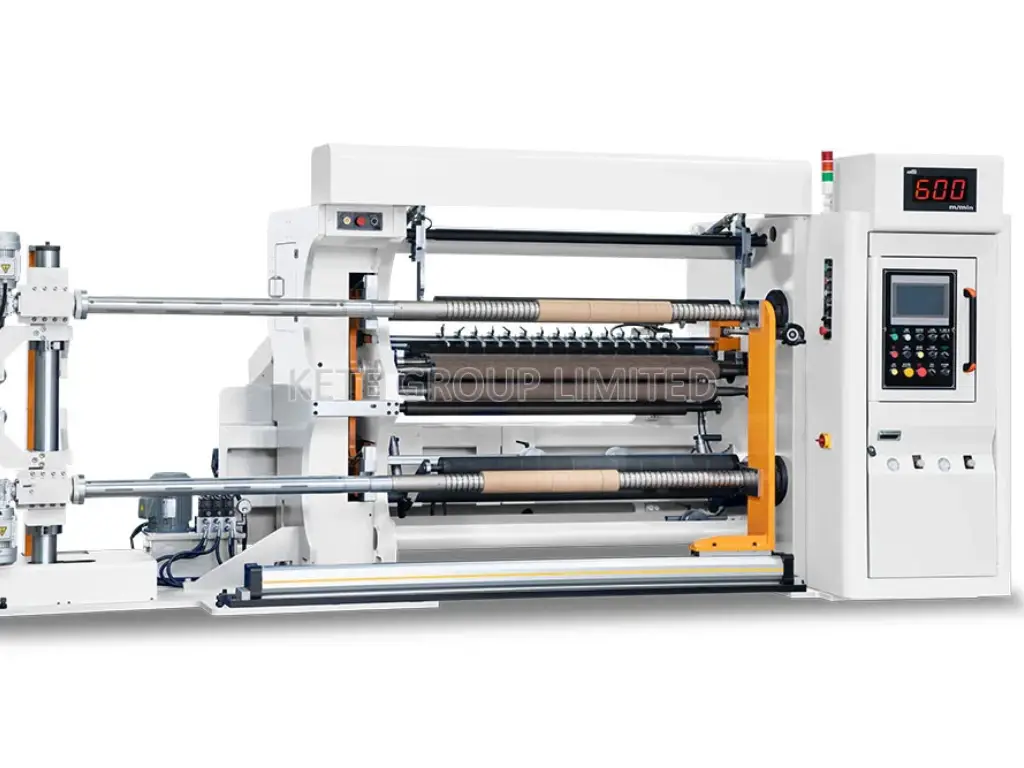
Einführung in die Plastiktüte
The use of plastic bags has become an integral part of our daily lives. From zipping to the grocery store to wrapping up our sandwiches, these different types of plastic bags are the real deal! We’ve got the zippy ones, the big trashy ones, and even the earth-hugging biodegradable plastic bags. Ever wondered how is a plastic bag made? The journey from tiny plastic pellets to a finished bag is a fascinating industrial process, centered around a technology known as Blown Film Extrusion. In this guide, we’ll break down exactly how to make plastic bags.
7 Steps: How to Make Plastic Bags?
Haben Sie sich schon einmal gefragt, wie eine einfache Plastiktüte zustande kommt? Der Herstellungsprozess von Plastiktüten umfasst eine Reihe komplizierter Schritte, die alle zur endgültigen Form der Tüte beitragen. Schauen wir uns den Herstellungsprozess von Kunststoffen einmal genauer an.
| Schritt | Beschreibung |
| Rohe Material Transformation | Raw polymers (derived from natural gas or petroleum) are transformed into plastic resin pellets through heating and pressure in machines like pelletizers. |
| Extrusion Process | The resin pellets are fed into an extruder, melted, and forced through a circular die to form a continuous plastic film tube. |
| Blown Film | The film tube is inflated with air, like a balloon, to stretch it to the desired thickness. |
| Cooling and Setting | The plastic film is rapidly cooled using air or water cooling systems to solidify it and ensure uniform thickness. |
| Coloring and Additive Mixing | Dyes and additives (e.g., UV stabilizers, tear resistance agents) are mixed into the molten plastic to give the film color and enhance its properties. |
| Schneiden und Versiegeln | The plastic film is cut into specific lengths, and the bottom is heat-sealed to form the bag’s base. |
| Printing (Optional) | Flexographic printing is used to apply logos, text, or designs onto the bags. |
| Quality Control and Testing | The bags undergo rigorous tests for thickness, strength, UV resistance, and other properties to ensure they meet quality standards. |
| Verpackung und Vertrieb | The finished plastic bags are counted, stacked, packaged, and prepared for shipping to retailers or consumers. |
Von Polymeren zu Harzgranulat: Die Umwandlung
Polymers are the raw materials, often coming from natural gas or crude oil, that are the starting point for your plastic bag. Before they become the bags that carry your groceries or your lunch, they must first undergo a significant transformation. These polymers are turned into what we call plastic resin pellets. Think of these plastic pellets as the fundamental building blocks; they are the basic units that will be used to create a durable and functional plastic bag..
Now, how does this metamorphosis happen? The process involves a series of controlled stages. First, the raw polymers are subjected to carefully controlled heat and pressure in specialized machines like pelletizers. The quality of these initial pellets directly impacts the final product, which is why the entire manufacturing line, from the extruder onwards, must be robust. This breaks down their complicated chains into simpler, more manageable forms. This process yields small, cylindrical pellets. These pellets are the go-to material for the next steps because they’re consistent and easy to work with.
These aren’t just any old pellets. They are precisely formulated with additives like colorants or UV stabilizers. So, when you see a plastic bag that’s a particular color or extra tough, it’s all thanks to the special recipe of these resin pellets.
In short, this initial stage of turning polymers into resin pellets is critical for the steps that follow. It sets the mood and prepares the stage for the main event. You can’t just skip it and expect a great show.
The Extrusion Process: Crafting the Plastic Film from Extruder
The film extrusion process is where the crucial transformation begins. The resin pellets are loaded into an extruder, a machine that’s about to give our plastic bag its shape.
This is the heart of the manufacturing line. In the industry, this entire stage is called the Blown Film Extrusion process. The molten plastic is forced through a circular die, which shapes it into a continuous tube of thin plastic film. As the tube exits the die, it is pulled upwards and inflated with air, like a long balloon. This stretching is what creates the thin, strong film.
Wenn der Kunststoff den Extruder verlässt, wird er mit kalter Luft oder Wasser schnell abgekühlt. Durch diese plötzliche Abkühlung verfestigt sich der Kunststoff und wird zu einer Folie. Die Dicke dieser Folie kann je nach den gewünschten Eigenschaften des fertigen Beutels eingestellt werden. Benötigen Sie eine strapazierfähige Tasche für den Transport von Ziegelsteinen? Dann brauchen Sie eine dickere Folie. Sie suchen eine leichte Tasche für den Transport eines Sandwichs? Dann ist eine dünnere Folie genau das Richtige.
Aber es gibt eine interessante Tatsache: Die Kunststofffolie ist nicht flach, wenn sie aus dem Extruder kommt. Sie ist eigentlich schlauchförmig. Wenn Ihnen schon einmal aufgefallen ist, dass die meisten Einkaufstüten aus Kunststoff an den Seiten nahtlos sind, dann ist das der Grund dafür. Sie werden aus einem durchgehenden Kunststoffschlauch geschnitten, was Stärke und Haltbarkeit gewährleistet.
Das Extrusionsverfahren ist ein Zeugnis für die Wunder der modernen Fertigung. Es ist eine Mischung aus Wissenschaft, Technik und einem Hauch von Kunstfertigkeit, die dafür sorgt, dass die Kunststofffolie genau für den vorgesehenen Zweck geeignet ist.
Färben und Hinzufügen von Zusatzstoffen
Sobald wir unsere Plastikfolie haben, ist es an der Zeit, ihr etwas Persönlichkeit zu verleihen. Während die natürliche Farbe von Polyethylen eher durchscheinend ist, gibt es Plastiktüten in einer Vielzahl von Farben, von undurchsichtig bis transparent. Wie macht man das? Indem man die Welt der Farbstoffe und Additive betritt.
Die Farbstoffe werden dem geschmolzenen Kunststoff vor dem Extrudieren beigemischt, um eine gleichmäßige Färbung der gesamten Folie zu gewährleisten. Ob Sie ein leuchtendes Rot oder ein dezentes Blau wünschen, es kommt auf die richtige Mischung der Farbstoffe an.
But color isn’t the only thing added to our bags. Additives play a crucial role in enhancing the final plastic bag properties. Need a bag that can withstand sunlight without degrading? UV stabilizers are added. Want a bag that’s more flexible or resistant to tears? There are additives for that too. This allows the bag’s final properties to be tailored for its intended use.
Abkühlen und Einstellen der Folie
Sobald der Kunststoff den Extruder verlässt, befindet er sich in einem etwas verletzlichen Zustand. Er ist warm, verformbar und hat noch nicht seine endgültige Form. An dieser Stelle kommt der Kühlprozess ins Spiel. Beim Kühlen geht es nicht nur darum, die Temperatur zu senken, sondern auch darum, dass der Kunststoff richtig aushärtet und seine gewünschte Dicke und Festigkeit beibehält.
Air-cooling systems blow cold air onto the film, solidifying it rapidly. In some cases, water cooling systems are used, where the film is passed over chilled rollers. This rapid cooling is crucial. If the film cools too slowly, it can become uneven or develop imperfections. Think of it like chocolate; if it doesn’t cool uniformly, it can become grainy or discolored. The efficiency of the cooling ring is a major factor in production speed. A well-designed air ring, for example, provides a uniform airflow that cools the bubble evenly, preventing weak spots and allowing the machine to run faster without sacrificing quality.
In dieser Phase spielen auch die Walzen eine entscheidende Rolle. Sie sorgen dafür, dass die Folie gleichmäßig gedehnt wird und keine Falten wirft. Es ist ein empfindliches Gleichgewicht von Temperatur und Spannung, das dafür sorgt, dass die Folie genau richtig ist.
Schneiden und Versiegeln
With our film set and ready, it’s time to transform it into recognizable bags. But how do we go from a continuous roll of plastic film to individual bags? The answer lies in precision cutting and sealing. Before the bags are cut, the rolls of plastic film are often sent to a printing press. Here, logos, text, and graphics are printed onto the film using a process called flexography, which is fast and efficient for large-scale production.
Die Folie wird in Maschinen eingeführt, die sie in regelmäßigen Abständen schneiden und so die Länge des Beutels bestimmen. Aber bei einem Beutel geht es nicht nur um die Länge, er braucht auch einen Boden. Hier kommt die Versiegelung ins Spiel. Der Boden jedes geschnittenen Abschnitts wird durch Hitze versiegelt. Durch diese Hitze verschmilzt der Kunststoff miteinander und bildet eine starke Verbindung, die den Boden des Beutels bildet. Es ist wichtig, dass diese Versiegelung robust ist, denn sie verleiht dem Beutel seine Tragfähigkeit.
Die Oberseite bleibt offen und ist einsatzbereit. In einigen Fällen werden zusätzliche Merkmale wie Griffe oder Reißverschlüsse hinzugefügt, um die Funktionalität der Tasche weiter zu verbessern.
Qualitätskontrolle: Prüfung der Dicke, Festigkeit und anderer gewünschter Eigenschaften
Die Qualitätskontrolle ist der unbesungene Held in der Welt der Plastiktütenproduktion. Schließlich will niemand eine Tüte, die beim geringsten Druck reißt. Wie wird also sichergestellt, dass Plastiktüten eine gleichbleibende Qualität aufweisen? Durch rigorose Tests.
Jede Charge von Beuteln wird einer Reihe von Tests unterzogen. Die Dicke der Beutel wird gemessen, um ihre Einheitlichkeit zu gewährleisten. Denn ein zu dünner Beutel könnte nicht halten, während ein zu dicker Beutel verschwenderisch sein könnte.
Auch Festigkeitsprüfungen sind von größter Bedeutung. Die Taschen werden bis an ihre Grenzen befüllt und gedehnt, um sicherzustellen, dass sie die vom Hersteller festgelegten Normen erfüllen. Weitere Tests umfassen die Bestrahlung mit UV-Licht (um die Widerstandsfähigkeit gegen Sonnenschäden zu prüfen) oder Feuchtigkeitstests (um die Fähigkeit der Tasche, Wasser abzuweisen).
Verpackung für den Vertrieb
Wenn die Taschen die Tests mit Bravour bestanden haben, sind sie bereit, in die Welt hinausgeschickt zu werden. Aber zuerst müssen sie verpackt werden. Maschinen zählen und stapeln die Tüten und bereiten sie für den Vertrieb vor. Dann werden sie in Kartons verpackt und können an Einzelhändler oder direkt an die Verbraucher versandt werden.
Arten der verwendeten Polymere: Woraus werden Plastiktüten hergestellt?
Haben Sie sich jemals gefragt, woraus die Plastiktüten in Ihrer Hand eigentlich bestehen? Nun, da sind Sie nicht allein. Die Arten von Polymeren, die in diesen Tüten verwendet werden, sind mehr als nur ein Wortspiel; sie sind das Rückgrat der vielen Verwendungsmöglichkeiten von Plastiktüten.
Polyethylen
Let’s start with the big one: polyethylene. It’s the most common material you’ll find in plastic bags. Originating from natural gas and petroleum, polyethylene goes through a whole manufacturing process to become the bags we use daily. There are different types, like low density polyethylene (LDPE), high-density polyethylene (HDPE), linear low-density polyethylene(LLDPE).
LDPE is what you’ll find in those softer, more flexible, and typically more transparent bags—think produce bags at the grocery store.
HDPE is sturdier, more opaque or translucent, and is what you’re holding when you’ve got a bag full of canned goods.
Linear low-density polyethylene (LLDPE) is tougher and has a higher tensile strength than LDPE. It’s often used in stretch films, toys, and some flexible containers.
Polypropylen
Dann gibt es noch Polypropylen, das andere Schwergewicht in der Welt der Plastiktüten. Dieses Material hat einen höheren Schmelzpunkt und ist daher die erste Wahl für alles, was Hitze aushalten muss. Polypropylen ist häufig in wiederverwendbaren Einkaufstaschen zu finden. Außerdem ist es hydrophob, d. h. es ist hervorragend wasserabweisend.
A Note on Additives and Colorants
It’s important to know that these base polymers are often just the starting point. To achieve specific properties, manufacturers mix in various additives. For instance, color masterbatch (a concentrated pigment) is added to create bags of any color, UV stabilizers are included to prevent the plastic from degrading in sunlight, and anti-static agents can be used to stop bags from clinging together. These additions are what give a plastic bag its final look, feel, and specific function.
So, whether it’s polyethylene or polypropylene, and with a little help from additives, each bag has its own set of perks that make it the right fit for different jobs.
Die unermesslichen Vorteile der Plastiktüte
There’s a whole bunch of reasons we can’t live without plastic bags. But let’s just chat about the highlights and key plastic bag properties that make them an important part of our everyday life.
| Leichtgewicht | Einer der wichtigsten Vorteile von Plastiktüten ist ihr geringes Gewicht. Dadurch sind sie nicht nur leicht zu transportieren, sondern senken auch die Transportkosten. Beim Versand von Produkten zählt jedes Gramm, und Plastiktüten bieten eine leichte und dennoch robuste Lösung, die zu erheblichen Kosteneinsparungen führen kann. |
| Dauerhaft | Der Schein kann trügen. Trotz ihrer dünnen Struktur sind Plastiktüten unglaublich haltbar. Dank der bei der Herstellung verwendeten Materialien Polyethylen hoher Dichte (HDPE) und Polyethylen niedriger Dichte (LDPE) können diese Tüten eine beträchtliche Menge an Gewicht tragen, ohne zu reißen. Diese Strapazierfähigkeit macht sie zur ersten Wahl in Lebensmittelgeschäften und im Einzelhandel. |
| Widerstandsfähig gegen Feuchtigkeit | Eine weitere bemerkenswerte Eigenschaft von Plastiktüten ist ihre Widerstandsfähigkeit gegen Feuchtigkeit. Ihre Einkäufe bleiben trocken, auch wenn es draußen gießt. Das ist die Magie von Kunststoff. Materialien wie Polypropylen halten Feuchtigkeit besonders gut ab und machen Plastiktüten ideal für die Lagerung von Lebensmitteln und andere feuchtigkeitsempfindliche Anwendungen. |
| Vielseitigkeit | Plastiktüten gibt es in allen Formen und Größen, was sie unglaublich vielseitig macht. Egal, ob Sie Kleidung, Lebensmittel oder Elektronik einkaufen, es gibt eine Plastiktüte, die Ihren Bedürfnissen entspricht. Die Vielfalt erstreckt sich auch auf Merkmale wie Griffe, Aufbewahrungsbeutel mit Reißverschluss und sogar die Art der Versiegelung, so dass sowohl für Verbraucher als auch für Unternehmen eine Reihe von Optionen zur Verfügung stehen. Darüber hinaus werden Bag-in-Box-Verpackungen häufig für Flüssigkeiten wie Kartonwein und andere Flüssigkeiten in Großpackungen verwendet. Diese Art der Verpackung bietet eine bequeme und effiziente Möglichkeit, Flüssigkeiten zu lagern und zu transportieren, und reduziert den Bedarf an Einweg-Plastikbeuteln. |
Diese Vorteile verdeutlichen den immensen Nutzen von Plastiktüten und machen sie zu mehr als nur einer Annehmlichkeit; sie sind ein Produkt durchdachter Technik und Gestaltung.

Sustainability in Production: What Happens to Waste Material?
Der umweltfreundliche Blick hinter die Kulissen Bei der Herstellung von Plastiktüten gibt es ein paar Dinge, die nicht in den endgültigen Schnitt gelangen. Wir sprechen hier von den Verschnittstücken, den "Ups - das ist nicht richtig"-Tüten und den Resten, die es nicht ganz aus den Maschinen geschafft haben. Aber in der heutigen umweltbewussten Welt kehren wir sie nicht einfach unter den Teppich.
Recycling: The Green Comeback A good slice of this backstage waste is ready for an encore. Off-cuts and those bags that didn’t pass the audition can be gathered, can be gathered, melted down, and reprocessed into new bags. This recycling loop is an efficient way to reuse raw materials in plastic production, cutting down the need for fresh polymers. It’s not just eco-friendly; it’s also kind to the manufacturer’s wallet.
Disposal: The Thoughtful Exit But let’s face it, not every piece of waste is ready for a second act. Some, due to mixed materials or other issues, just can’t be recycled and reused. But even these get a dignified exit. Instead of being sent directly to a landfill, they’re often incinerated in a controlled setting, keeping the environment’s best interests at heart. And the cherry on top? Some top-notch facilities turn the energy from this process into electricity. Now that’s a bright idea!
Schlussfolgerung
From the initial melting of polymer pellets to the final cut and seal, understanding how a plastic bag is made reveals a process of precision engineering. The process of blown film extrusion, followed by automated conversion, transforms simple raw materials into a durable and versatile everyday item. Now that you’ve seen the intricate steps involved, you have a deeper appreciation for the technology and science behind this ubiquitous product.
Starten Sie Ihr Plastiktüten-Projekt mit KETE
Understanding how plastic bags are made is the first step. Bringing them to life requires precision machinery engineered for efficiency and quality. The blown film extruders, printing presses, and bag-making machines are all critical components of a successful production line.
If you’re considering entering the plastic bag industry or want to upgrade your current operations, having the right technology partner is key. At KETE, we don’t just supply machines; we provide complete solutions tailored to your production goals. Contact our experts for a technical consultation or to get a quote on a production line that fits your needs.
FAQS
Q: How much of plastic bags are actually recycled?
A: Although plastic bags are technically recyclable, less than 10% of them are actually recycled. Most end up in landfills, incinerators, or the environment due to contamination, mixed materials, or the lack of specialized recycling facilities.
Q: What are plastic bags actually made of?
A: Plastic bags are typically made from high-density polyethylene (HDPE) or low-density polyethylene (LDPE), both of which are petroleum-based plastics. These materials are lightweight, durable, and moisture-resistant, making them ideal for packaging and retail use.
Q: Why can’t Ziploc bags be recycled?
A: Ziploc bags are often made of recyclable polyethylene, but they’re frequently contaminated with food residue, oils, or moisture, which makes them difficult to process through standard curbside recycling programs. Additionally, their zipper seals can include mixed materials. However, some grocery stores offer drop-off bins specifically for clean, dry plastic films, including Ziploc bags.
Q: How many years does it take for plastic bags to decompose naturally?
A: Plastic bags can take 500 to 1,000 years to break down in the environment. Even then, they don’t fully biodegrade — they fragment into microplastics, which persist in ecosystems and pose long-term threats to wildlife and human health.

